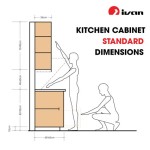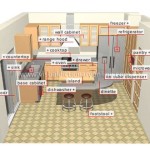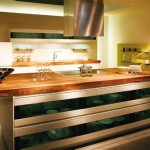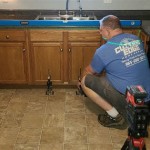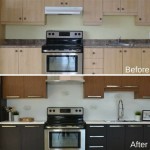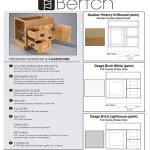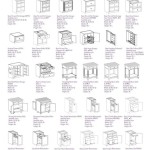Interesting Kitchen Cabinet Knobs: A Detailed Exploration
Kitchen cabinet knobs, often perceived as diminutive details, are in fact pivotal in defining the aesthetic and functional character of a kitchen. Choosing the right knobs can significantly enhance the overall design, complementing the cabinetry style and contributing to the user experience. The market presents a vast and diverse range of knobs, each with unique characteristics that cater to different tastes and design preferences. This article delves into the world of kitchen cabinet knobs, exploring their various types, materials, styles, and considerations for selection.
The impact of cabinet hardware extends beyond mere functionality. Knobs serve as tactile points of interaction, influencing how one engages with the kitchen space. Their texture, weight, and design contribute to the overall feeling of quality and craftsmanship. Therefore, a thoughtful approach to selecting the correct knobs is essential in achieving a cohesive and satisfying kitchen design.
Types and Materials of Kitchen Cabinet Knobs
Kitchen cabinet knobs are available in a wide array of materials, each offering distinct aesthetic and performance characteristics. The selection of material should align with the overall kitchen design, considering factors such as durability, maintenance requirements, and aesthetic preferences.
Metal knobs are a popular choice due to their durability and versatility. Common metals used include:
Brass: Brass knobs offer a classic and timeless appeal. They can be polished to a high shine or left to develop a natural patina, lending a sense of age and character. Brass is relatively durable and resistant to corrosion, making it suitable for kitchen environments.
Stainless Steel: Stainless steel knobs are known for their sleek and modern aesthetic. They are highly resistant to corrosion and staining, making them a practical choice for busy kitchens. Stainless steel complements contemporary cabinet designs.
Chrome: Chrome knobs provide a bright and reflective surface. They are durable and easy to clean, but may show fingerprints more readily than other finishes. Chrome is often used in modern and minimalist kitchen designs.
Bronze: Bronze knobs offer a warm and rustic aesthetic. They are typically used in traditional and farmhouse-style kitchens. Bronze is durable and develops a unique patina over time.
Beyond metals, other popular knob materials include:
Ceramic: Ceramic knobs offer a decorative and customizable option. They are available in a wide range of colors, patterns, and designs. Ceramic is relatively fragile compared to metal and may chip or crack if subjected to impact.
Glass: Glass knobs can add a touch of elegance and sophistication to a kitchen. They are available in clear, frosted, and colored varieties. Glass is also fragile and requires careful handling.
Wood: Wood knobs provide a natural and organic feel. They are often used in rustic and farmhouse-style kitchens. Wood knobs require sealing and finishing to protect them from moisture and staining.
Acrylic: Acrylic knobs offer a modern and customizable option. They are available in a variety of colors and can be molded into different shapes. Acrylic is durable and easy to clean.
The choice of material will influence the overall aesthetic and durability of the kitchen hardware. Careful consideration of the material properties is essential in selecting knobs that meet both design and functional requirements.
Styles and Design Considerations for Kitchen Cabinet Knobs
The style of kitchen cabinet knobs should complement the overall design of the kitchen. From traditional to modern, there are knobs available to suit any aesthetic preference. The shape, size, and finish of the knobs should be carefully considered to achieve a cohesive and visually appealing look.
Traditional Knobs: Traditional knobs often feature ornate detailing, such as floral patterns, scrollwork, and antique finishes. Common shapes include round, oval, and square with rounded edges. These knobs are typically made of brass, bronze, or ceramic.
Modern Knobs: Modern knobs are characterized by their clean lines, minimalist designs, and geometric shapes. Common shapes include round, square, and rectangular. These knobs are often made of stainless steel, chrome, or acrylic.
Transitional Knobs: Transitional knobs bridge the gap between traditional and modern styles. They feature a blend of classic and contemporary design elements. Transitional knobs are available in a variety of materials and finishes.
Rustic Knobs: Rustic knobs are designed to evoke a sense of warmth and nature. They often feature natural materials such as wood, stone, and wrought iron. Rustic knobs typically have a distressed or antique finish.
Novelty Knobs: Novelty knobs offer a playful and whimsical touch. They come in a wide range of shapes and designs, from animals and plants to abstract patterns. Novelty knobs can add personality to a kitchen.
Beyond the overall style, other design considerations include:
Size: The size of the knobs should be proportional to the size of the cabinets and drawers. Smaller knobs are suitable for smaller cabinets and drawers, while larger knobs are better suited for larger ones.
Shape: The shape of the knobs should be comfortable to grip and use. Round and oval knobs are generally easier to grip than square or rectangular knobs.
Finish: The finish of the knobs should complement the color and material of the cabinets. Common finishes include polished, brushed, matte, and antique.
Careful consideration of these design elements will result in a cohesive and visually appealing kitchen hardware scheme.
Installation and Maintenance of Kitchen Cabinet Knobs
Proper installation and regular maintenance are crucial for ensuring the longevity and functionality of kitchen cabinet knobs. Incorrect installation can lead to loose knobs, damaged cabinets, and compromised aesthetics. Routine cleaning and care will preserve the finish and prevent corrosion.
Installation typically involves the following steps:
1. Preparation: Gather the necessary tools, including a screwdriver, drill (if necessary), and measuring tape. Ensure that the cabinet doors and drawers are clean and free of debris.
2. Marking: Use a measuring tape to accurately mark the desired location for the knobs on the cabinet doors and drawers. Consistency in placement is essential for a professional look.
3. Drilling (if necessary): If the cabinets do not have pre-drilled holes, use a drill to create holes that are appropriately sized for the knob screws. Be careful not to drill too deeply, which could damage the cabinet interior.
4. Installation: Insert the knob screws through the back of the cabinet doors or drawers and tighten securely into the knobs. Avoid overtightening, which can strip the screws or damage the knobs.
5. Verification: Ensure that the knobs are securely attached and aligned properly. Open and close the cabinet doors and drawers to check for smooth operation.
Maintenance should include the following practices:
Regular Cleaning: Clean the knobs regularly with a soft cloth and mild soap and water. Avoid using abrasive cleaners or harsh chemicals, which can damage the finish.
Polishing (if applicable): For metal knobs, use a metal polish to maintain their shine and prevent tarnishing. Follow the manufacturer's instructions for polishing.
Tightening: Periodically check the knob screws and tighten them if necessary. Loose knobs can be a safety hazard and can also damage the cabinets over time.
Protecting from Moisture: Avoid exposing wood and ceramic knobs to excessive moisture. Wipe up spills promptly to prevent staining and damage.
By following these installation and maintenance guidelines, homeowners can ensure that their kitchen cabinet knobs remain functional, attractive, and long-lasting.

62 Unique Kitchen Cabinet Hardware Ideas For Your Home Best Cabinets Handles

Unusual Cabinet Pulls Unique Kitchen Hardware

Best Kitchen Cabinet Hardware 2024

Best Kitchen Cabinet Hardware 2024

Coastal Cabinet Knobs And Pulls

5 Popular Kitchen Cabinet Hardware Ideas Revision Charlotte

60 Of Our Favorite Budget Friendly Cabinet Hardware Picks

Kitchen Hardware Cabinet Trends Waesha Wi Schoenwalder Plumbing

7 Unique Kitchen Cabinet Hardware Options

Unique Hardware That Takes Your New Home S Cabinets To The Next Level Newhomesource
Related Posts

